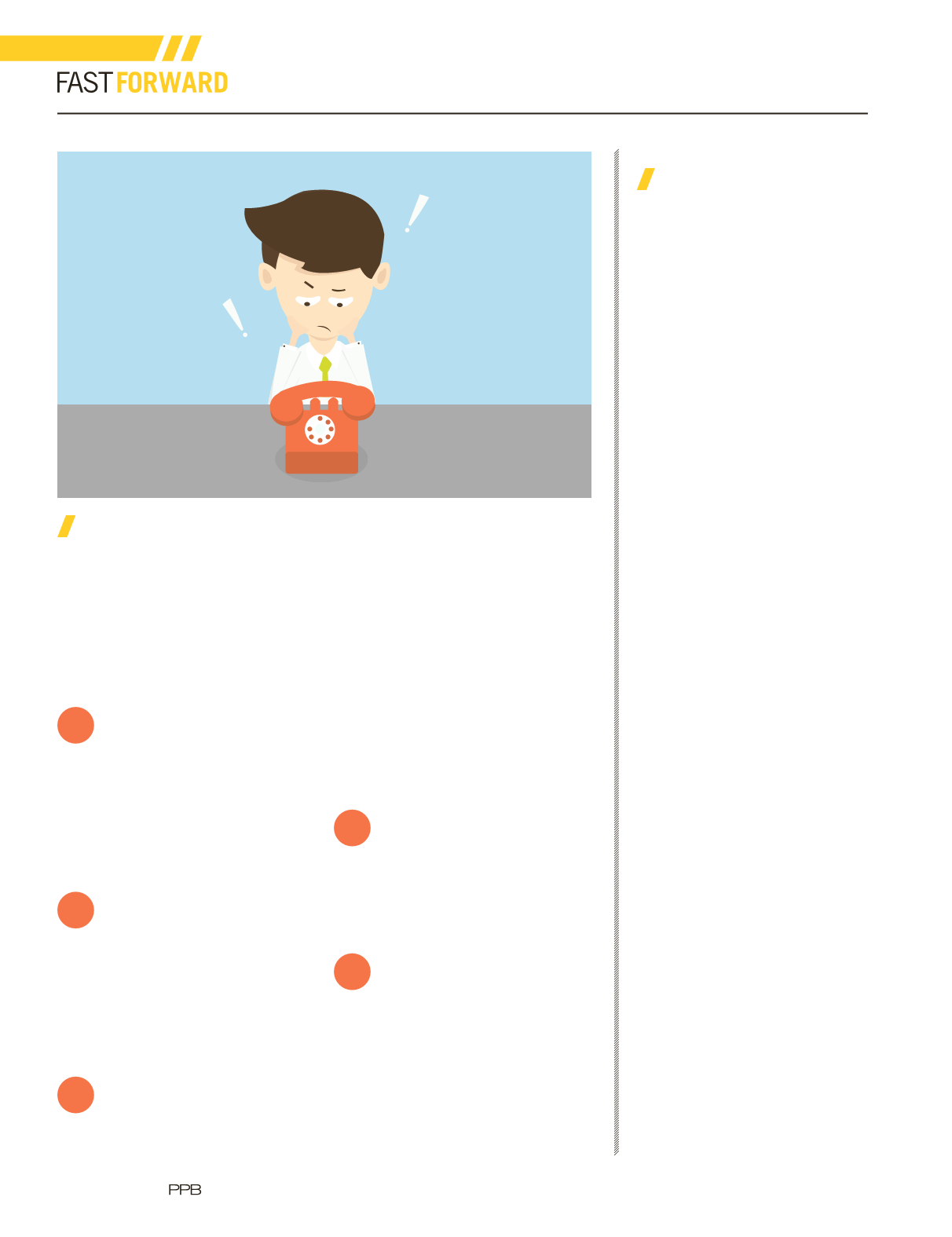

58
|
APRIL 2017
|
THINK
WATER COOLER
Waiting IsThe Hardest Part
Tired of waiting for the phone to ring (or that email to pop up in your inbox)? Don’t sweat
it, says marketing expert Elliott Bell. You can, and should, follow up. As many times as it
takes, in fact. The trick is knowing the right way to follow up on any conversation—be it an
interview or sales pitch—to help you get your answer and get on with your life. Check out
these five tips for fuss-free follow-up.
1
Stay Civil
Even when it’s not personal, being
made to wait on an answer feels personal.
Rather than letting those feelings come out
in your follow-up message, keep a friendly
tone and use language that plainly shows you
understand how busy your contact is, and
you appreciate them giving their time to you.
2
Be Persistent, Not A Pest
Avoid the urge to check that pot of
boiling water constantly. Waiting one week
between contacts is a good rule of thumb
where tighter deadlines aren’t in play. After
a couple emails are sent weekly, switch
to one every two weeks until you get a
response or a decision notice.
3
Cease Fire On Command
If those polite, well-timed follow-
up messages aren’t being reciprocated,
take the direct approach. It’s okay to ask
outright if you should stop contacting the
other party. This way neither of you is
experiencing wasted time and long stretches
of awkward silence.
4
Try A Little Creativity
Whether your follow-up email
contains a little useless trivia or some
appreciated insights, adding something
unique to the standard follow-up message
can get you noticed.
5
Mix Things Up
Are you in the habit of leaving
messages at the same time, on the same
day? So are millions of others. It’s good to be
consistent, but automating those messages
makes you seem like you’re just hedging
your bets. Try sending an email at 3:30 on
a Friday afternoon, or at 7:45 on a Tuesday
morning. You never know when you’ll catch
someone with a moment to spare.
AD-ITIVES
Advertising
In Disguise
Native video follows in the
footsteps of advertorials
and product placement to
reach online consumers in a
subtler way.
If you ask the folks who created the
classic print advertorial Guinness Guide
to Oysters, they might tell you that the
best form of advertising never looks like
advertising. Rather than an in-your-face
proclamation, native advertising seeks
to blend in with its surroundings. Online
campaigns often pop up in one of two
forms: sponsored content and native
video. It’s the latter that is seeing the
most potential for long-term success.
The numbers support the strategy:
$4 billion is spent on mobile video ads
in the U.S., including native ads. For
inspiration, look to Red Bull. This energy
drink giant is considered a pioneer in
modern native advertising, and its Chain
Reaction video ad is a prime example.
Native video, like other forms of
native advertising, is focused on providing
relevant information to a specific
audience that accesses a particular
channel. Native video may play halfway
through an article on a website, pop
up in a Facebook news feed, or it may
bookend streaming video content. What
makes the video content native, and
therefore subtle, is that the content fits
the mold of the channel through which it
is being delivered.
What’s more, the content of native
video isn’t focused on overtly promoting
a product or service, but rather showing
how that product or service has been
integrated into everyday situations. And
when the consumer can more easily
imagine living and interacting with a
brand, they are more likely to engage.
by
Jen Alexander
















